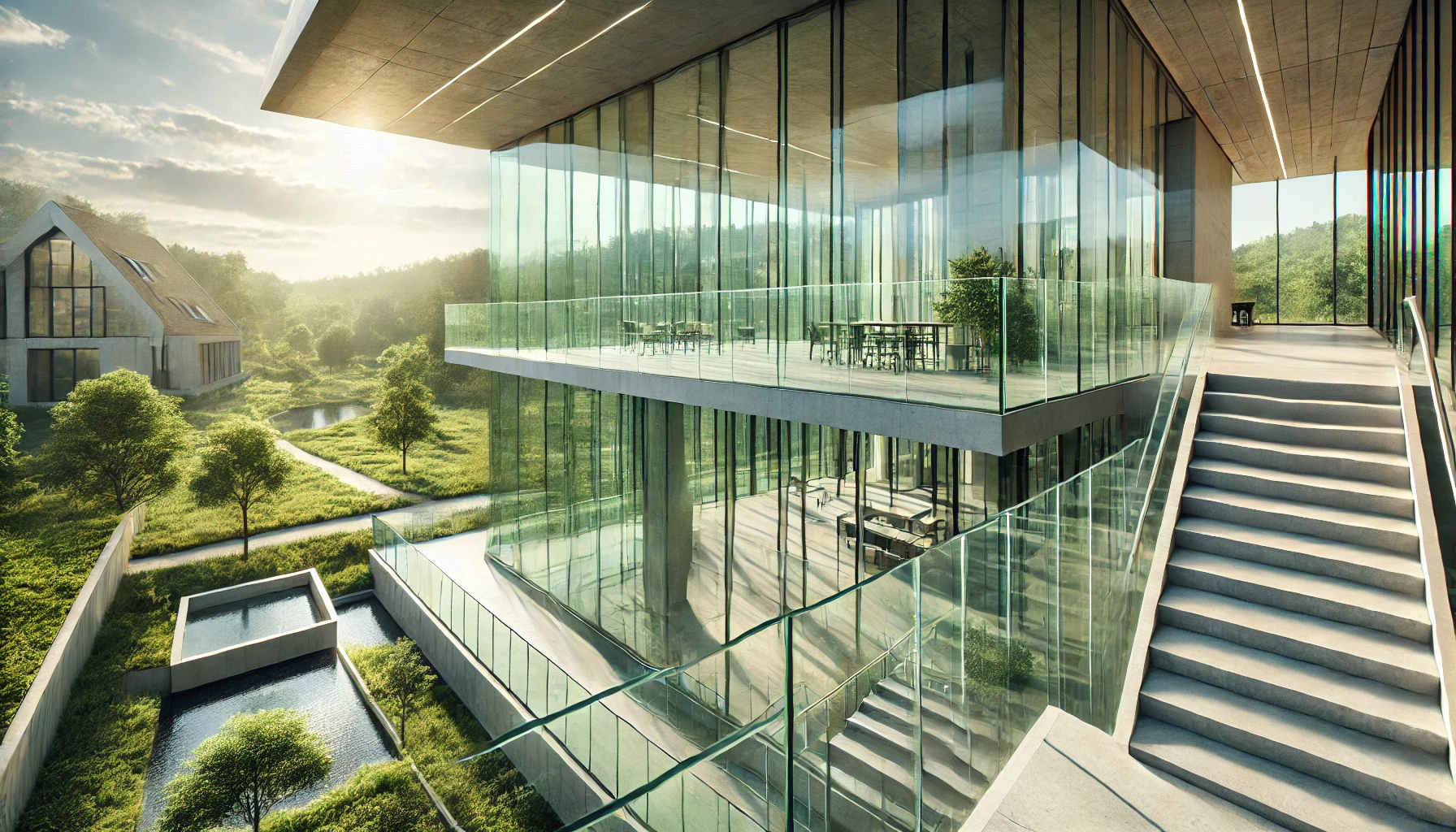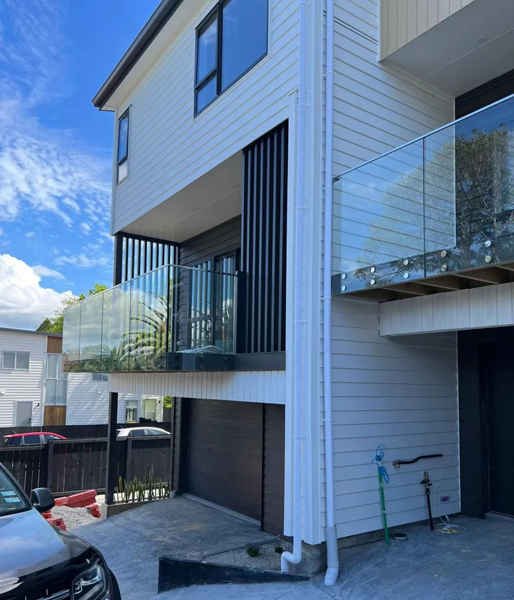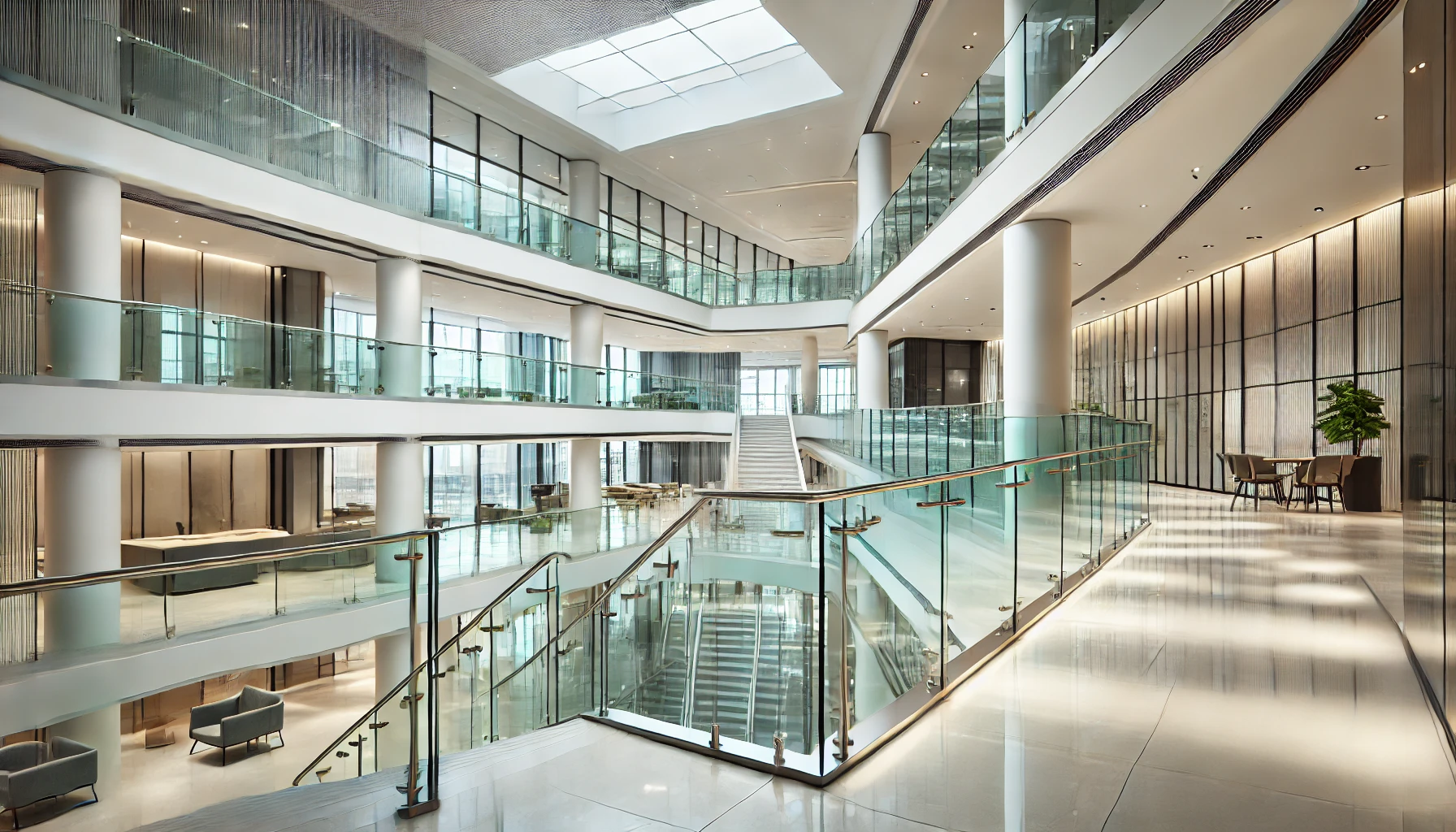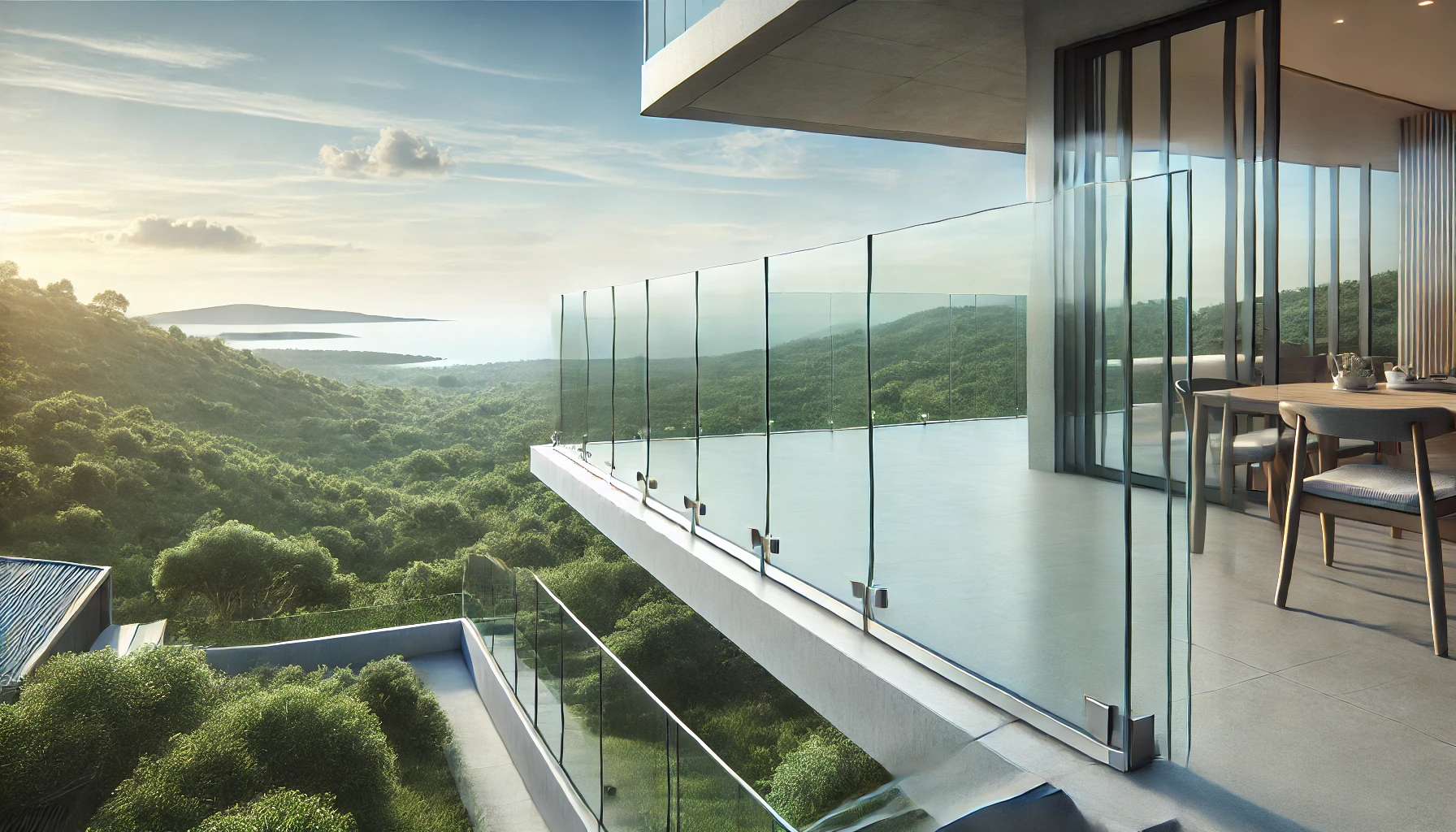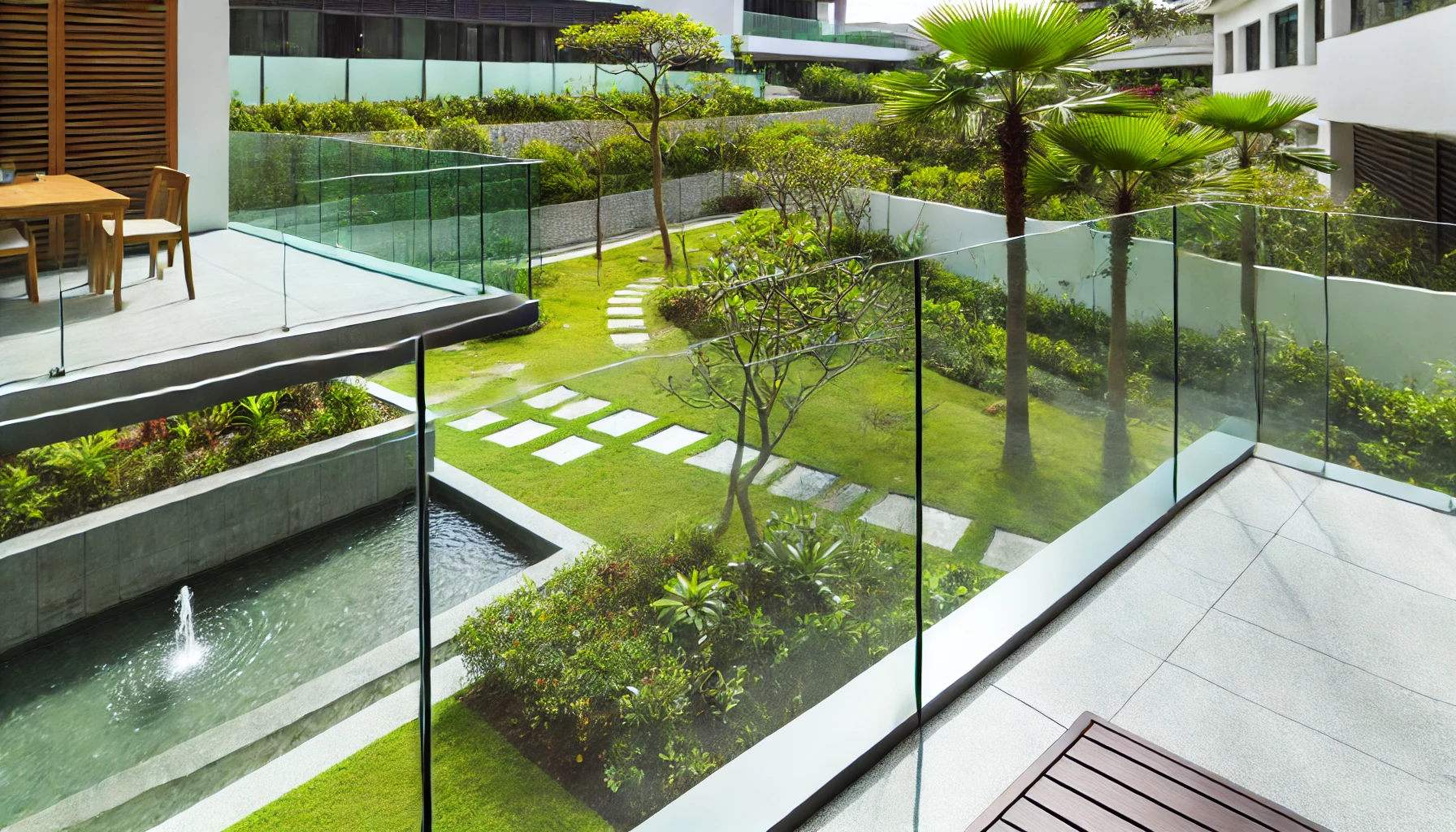Introduction
Sustainable architecture has gained significant traction in recent years as the world moves towards more environmentally conscious building practices. Among the many materials that contribute to sustainable design, glass railings stand out as a choice that not only enhances the aesthetic appeal of a space but also supports green building initiatives. This article explores the role of glass railings in sustainable architecture, highlighting their environmental benefits, energy efficiency, and how they contribute to the overall sustainability of modern buildings.
1. Environmental Benefits of Glass Railings
Glass is an inherently sustainable material due to its recyclability and long lifespan. When used in railings, glass offers several environmental benefits:
- Recyclability: One of the key advantages of glass is that it is 100% recyclable without any loss of quality. Recycled glass can be repurposed into new products, reducing the demand for raw materials and minimizing waste. This makes glass railings an eco-friendly choice for projects that prioritize sustainability.
- Durability and Longevity: Glass railings are highly durable and resistant to weathering, corrosion, and wear. This longevity reduces the need for frequent replacements, which in turn lowers the overall environmental impact associated with the production and disposal of building materials.
- Low Maintenance: The low maintenance requirements of glass railings contribute to their environmental benefits. Unlike wood or metal, glass does not require regular painting, staining, or chemical treatments to maintain its appearance and integrity. This reduces the use of harmful chemicals and the associated environmental impact.
2. Energy Efficiency and Light Optimization
One of the significant contributions of glass railings to sustainable architecture is their ability to enhance energy efficiency and optimize natural light within a building.
- Maximizing Natural Light: Glass railings allow for the maximum transmission of natural light, which can reduce the need for artificial lighting during the day. This not only creates a more pleasant and productive environment but also reduces energy consumption. In commercial buildings, this can lead to significant energy savings and lower operating costs.
- Thermal Performance: When combined with advanced glazing technologies, glass railings can also contribute to the thermal performance of a building. For instance, low-emissivity (Low-E) glass can be used in railings to reduce heat transfer, helping to keep indoor spaces cooler in the summer and warmer in the winter. This reduces the reliance on heating and cooling systems, further lowering energy consumption.
- Daylighting Strategies: Incorporating glass railings into daylighting strategies can enhance the distribution of natural light throughout a building. This not only improves indoor environmental quality but also contributes to the building’s overall energy efficiency by reducing the need for electrical lighting.
3. Contribution to LEED and Green Building Certifications
Glass railings can play a crucial role in helping buildings achieve LEED (Leadership in Energy and Environmental Design) and other green building certifications. These certifications recognize buildings that meet high standards of sustainability, energy efficiency, and environmental responsibility.
- Material and Resources Credit: Glass railings can contribute to LEED credits under the Materials and Resources category. This category rewards the use of recycled, sustainable, and locally sourced materials. By using glass that contains recycled content or is produced locally, architects can earn points towards LEED certification.
- Indoor Environmental Quality: The use of glass railings can also contribute to credits under the Indoor Environmental Quality category. This includes credits for maximizing daylight, improving views, and enhancing occupant comfort through better light and air quality. Glass railings, by allowing more natural light and creating visual connections with the outdoors, can improve the overall indoor environment.
- Sustainable Sites: In exterior applications, glass railings can support the Sustainable Sites category by contributing to open spaces and maintaining natural site conditions. For example, glass railings used in outdoor terraces, balconies, and green roofs can help preserve sightlines and connect occupants with nature, supporting the principles of sustainable site development.
4. Case Studies: Glass Railings in Sustainable Architecture
To illustrate the role of glass railings in sustainable architecture, let’s look at a few case studies where these features have been successfully integrated into green building projects.
- Case Study 1: The Bullitt Center, Seattle
Often referred to as the greenest commercial building in the world, the Bullitt Center in Seattle incorporates glass railings as part of its commitment to sustainability. The building features large glass windows and glass railings on staircases and terraces that maximize natural light and provide stunning views of the surrounding environment. The use of recycled and locally sourced materials, including the glass, contributed to the building achieving Living Building Challenge certification. - Case Study 2: The Edge, Amsterdam
The Edge in Amsterdam, known as one of the most sustainable office buildings globally, uses glass extensively, including in its railing systems. Glass railings are used throughout the building to promote transparency and allow natural light to penetrate deep into the interior spaces. The building’s design includes numerous sustainable features, such as energy-efficient systems and materials, which helped it achieve the highest BREEAM rating. - Case Study 3: One Angel Square, Manchester
One Angel Square is a landmark sustainable building in Manchester, featuring glass railings that contribute to its BREEAM Outstanding rating. The building’s design focuses on energy efficiency and environmental performance, with glass railings used on balconies and interior spaces to enhance natural light and reduce the need for artificial lighting. The use of high-performance glazing also contributes to the building’s overall thermal efficiency.
5. The Future of Glass Railings in Sustainable Design (Continued)
As sustainable architecture continues to evolve, the role of glass railings is expected to expand. Future trends may include the use of smart glass, which can adjust its opacity based on environmental conditions, further enhancing energy efficiency and occupant comfort.
- Smart Glass Technologies: Smart glass technologies, such as electrochromic or photochromic glass, allow for dynamic control of light and heat entering a building. These technologies can be integrated into glass railings to provide additional energy-saving benefits, such as reducing glare and heat gain while still allowing natural light and views. As these technologies become more affordable and widely available, they are likely to become a standard feature in sustainable building design.
- Sustainable Manufacturing Practices: The future of glass railings in sustainable architecture also lies in the adoption of greener manufacturing processes. This includes reducing the carbon footprint of glass production, increasing the use of recycled materials, and minimizing energy consumption during the manufacturing process. Companies are already exploring ways to produce glass in more environmentally friendly ways, such as using renewable energy sources and reducing waste during production.
- Integration with Renewable Energy Systems: Another exciting development is the integration of glass railings with renewable energy systems. For example, photovoltaic (PV) glass can be used in railings to generate electricity from sunlight, contributing to the building’s energy needs. This not only supports the building’s sustainability goals but also offers an innovative way to harness renewable energy without compromising on design aesthetics.
6. Challenges and Considerations
While glass railings offer numerous benefits for sustainable architecture, there are also challenges and considerations to keep in mind:
- Cost: Glass railings, especially those incorporating advanced technologies like smart glass or PV glass, can be more expensive than traditional materials. It’s important to balance the initial investment with the long-term savings in energy costs and the environmental benefits.
- Safety and Building Codes: Ensuring that glass railings meet safety standards and building codes is crucial. This includes selecting the right type of glass, ensuring proper installation, and considering the impact of extreme weather conditions in certain regions.
- Maintenance: While glass is relatively low-maintenance, keeping glass railings in pristine condition requires regular cleaning and inspections. This is particularly important in outdoor settings where exposure to the elements can affect the appearance and integrity of the glass over time.
Conclusion
Glass railings play a significant role in sustainable architecture, offering both environmental benefits and aesthetic appeal. Their ability to enhance natural light, contribute to energy efficiency, and support green building certifications makes them an excellent choice for modern, eco-friendly designs. As technology advances, the integration of smart glass and other innovations will further enhance the sustainability of glass railings, making them an even more valuable component in the future of green building practices.
By carefully considering the design, materials, and long-term benefits, architects and builders can leverage glass railings to create spaces that are not only beautiful but also aligned with the principles of sustainability. As the demand for sustainable architecture grows, glass railings will continue to be a vital element in creating buildings that are both environmentally responsible and visually stunning.

